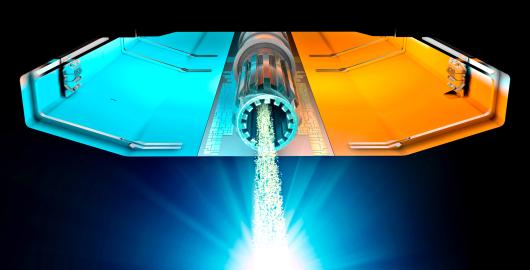The field of particle physics asks fundamental questions about how our universe works: What is the nature of the "dark matter" in the universe? Why is there more matter than antimatter?
And why have the known elementary particles got the properties that they do? In attempting to answer such questions, physicists have come up with a surplus of new theories.

The role of Anders Kvellestad at the University of Oslo and his fellow researchers’ GAMBIT project is to test such new theories against results from all types of particle physics experiments. This includes results from the Large Hadron Collider at CERN and from many different experiments that try to detect dark matter particles.
"In broad terms we identify the most promising new theories in particle physics and investigate what predictions these theories make for future experiments. One question we focus on is whether there are clues in the current set of experiment results that can point towards some specific solutions to the dark matter mystery."
Anders Kvellestad, University of Oslo
The large-scale statistical analyses they perform with GAMBIT ensure that their research field extracts as much scientific insight as possible from the results of large, publicly funded experiments, such as the Large Hadron Collider.
Exploring theoretical parameters
Every new theory comes with a set of free parameters – essentially knobs that can be tuned to alter the theory’s predictions. The GAMBIT code combines smart sampling algorithms, parallelisation, and optimised physics simulations to explore the parameter space of new theories and test the predictions against experiment results. This way, the researchers identify which theories can be ruled out and which should be investigated further in future experiments. They were recently awarded computing time on the PRACE Tier-0 systems.
A perhaps distinct feature of the GAMBIT project is that the research programme is divided into multiple independent sub-projects, each investigating a different particle physics theory. This modularity has made it easier to ensure good use of the allocated computing resources, even in cases where one sub-project encounters an unexpected delay.
Building on experience and broadening perspectives
The rsearchers had the benefit of building their application on 3 years of prior experience with running GAMBIT on different PRACE HPC systems, which is the computational backbone of the project. A project that has grown to involve around 70 researchers worldwide.
The award will enable the researchers to extend their programme further and to investigate new particle physics theories that have never been subjected to the type of large-scale and robust statistical assessment that can be performed with GAMBIT.
The GAMBIT project
The GAMBIT project was awarded its first PRACE allocation, a three-year Project Access grant, back in 2017. In preparation for that call, Kvellestad and his fellow researchers applied for and were awarded PRACE Preparatory Access to carry out performance tests of the GAMBIT code on the relevant HPC system. This was critical for the success of their first application.